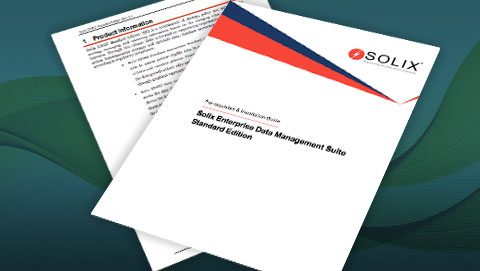Format Preserving Encryption
What is Format Preserving Encryption (FPE)?
Format-preserving encryption (FPE) is a data masking technique that transforms data to adhere to its existing structure, be it credit card numbers, Social Security Numbers, or other identifiable information. Unlike traditional encryption methods, this technique ensures that the encrypted output resembles the characteristics of the unencrypted data, maintaining the same length and format.
The process typically involves using algorithms that leverage reversible and deterministic encryption techniques. This ensures that the encrypted data, while secure, remains usable and compatible with the systems that process it. As a result, it is precious in scenarios where the format and length of the original data are crucial, such as databases, applications, or systems with specific data input requirements.

How Format Preserving Encryption (FPE) works?
Components of Format Preserving Encryption (FPE)
Unlike traditional encryption methods that may alter the length and structure of the data, Format Preserving Encryption (FPE) retains plaintext format in ciphertext, ensuring encrypted data resembles the original, which is vital for preserving structure in sensitive data applications. Here’s a closer look at its components.
- Key: FPE relies on a cryptographic key for encryption and decryption processes like any encryption scheme. The key is a piece of secret information used to control the encryption and decryption algorithms.
- Cipher Algorithm: FPE utilizes a specific encryption algorithm to transform plaintext into ciphertext. Common cryptographic algorithms used in FPE include Feistel networks, Advanced Encryption Standard (AES), and others.
- Permutation Function: FPE employs a permutation function to map plaintext elements to ciphertext elements while preserving the format. This function ensures that the resulting ciphertext maintains the original format of the plaintext.
- Key Management: FPE systems require robust key management practices to secure the encryption keys. This includes key generation, distribution, storage, and rotation to maintain the security of the encrypted data.
Benefits of FPE
Format Preserving Encryption (FPE) stands out as a powerful tool in data security solutions, offering a holistic approach to safeguarding sensitive information while addressing the nuanced requirements of various industries. Here’s an in-depth exploration of the benefits, seamlessly incorporating relevant keywords:
- Data Integrity Preservation: It ensures that the encrypted output has the same structure as the original one, which is particularly crucial in scenarios where the length and format of data are pivotal for processing and analysis.
- Versatility Across Data Types: It can be applied to various data types and structures. Whether encrypting credit card information in financial transactions or preserving the format of medical records in healthcare, it adapts to the specific requirements of different industries.
- Compliance with Regulations: Organizations handling sensitive information can leverage FPE to encrypt sensitive data while adhering to compliance standards. It fortifies data security and ensures regulatory compliance, mitigating the risk of legal repercussions.
- Mitigation of Data Breach Risks: It defends against internal and external threats, reducing data breach risks by encrypting sensitive data while maintaining its format and ensuring security against unauthorized access.
- Realistic Test Data: Its ability to maintain format while securing sensitive information makes it valuable in creating real testing scenarios without exposing actual data.
- Dynamic and Static Data Masking: It seamlessly integrates into dynamic and static data masking strategies. Whether applied in real-time interactions or used to protect stored data, FPE provides a consistent and reversible encryption approach, catering to the evolving needs of organizations.
- Consistent Reversibility: It offers consistent reversibility for authorized users. While the primary goal is to secure data, authorized applications or users can decrypt the information for legitimate purposes, ensuring a balance between data security and functionality.
Use Cases of FPE
Format-preserving encryption (FPE) is a versatile and indispensable tool across various industries and scenarios, addressing the unique challenges of securing sensitive data while preserving its original format. Here’s a detailed exploration of its diverse use cases:
- Financial Transactions and Payment Processing: Format Preserving Encryption (FPE) is crucial in securing financial transactions by maintaining the format of sensitive data like credit card numbers, ensuring confidentiality, and reducing the risk of breaches.
- Healthcare Data Protection: It encrypts healthcare data without altering the format, ensuring seamless integration into systems while preserving crucial data structures for processing, analyzing, and maintaining security standards.
- Testing and Development Environments: It helps preserve the original data format and allows organizations to create realistic scenarios without exposing sensitive information, addressing the need for data masking in non-production environments.
- Secure Database Operations: Enterprises often employ FPE to secure databases where preserving the original data format is essential. It ensures that sensitive information is encrypted while maintaining compatibility with database structures, enhancing enterprise security.
- Retail and E-commerce Transactions: Securing customer data during e-commerce transactions is vital. FPE encrypts shipping addresses and contact details while preserving their original format.
- Human Resources and Employee Records: It safeguards sensitive information in human resources databases, including employee identification numbers and personal details. This ensures that employee records remain secure and supports data compliance with privacy regulations.
In essence, Format-Preserving Encryption (FPE) demonstrates its efficacy across a spectrum of use cases, contributing to the robust protection of sensitive information in diverse industries. FPE’s capacity to balance security and usability makes it a versatile data security solution in the evolving enterprise security landscape. Combining the potency of encryption with the preservation of data format offers a unique and practical approach to secure sensitive information.
FAQ
Why use Format Preserving Encryption (FPE) instead of traditional encryption methods?
FPE retains data format, which is crucial for systems reliant on specific formats, such as databases or legacy systems. It ensures seamless integration without extensive modifications.
Does FPE support all data types and formats?
FPE supports various data types, including alphanumeric strings, integers, and structured data formats. It facilitates encryption without compromising data integrity or format.
Is FPE suitable for encrypting highly structured data with complex formats?
FPE accommodates complex data structures, preserving their format during encryption, making it suitable for applications where maintaining data structure integrity is critical for processing and analysis.
Can FPE be integrated into existing encryption frameworks or systems?
FPE is adaptable and can be seamlessly integrated into existing encryption frameworks or systems, offering compatibility with various encryption protocols and facilitating smooth deployment processes.





